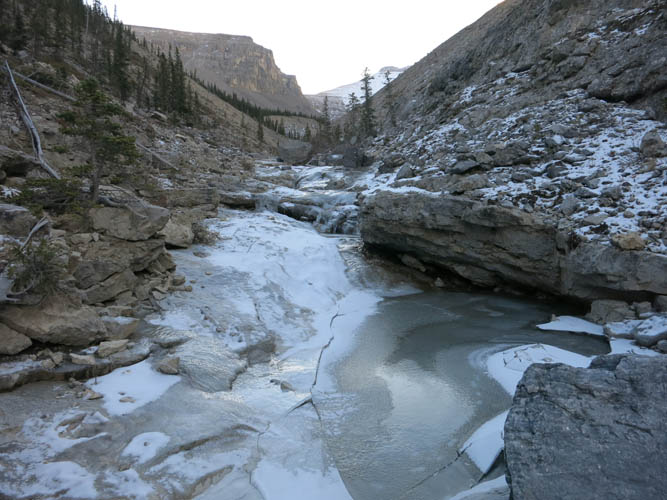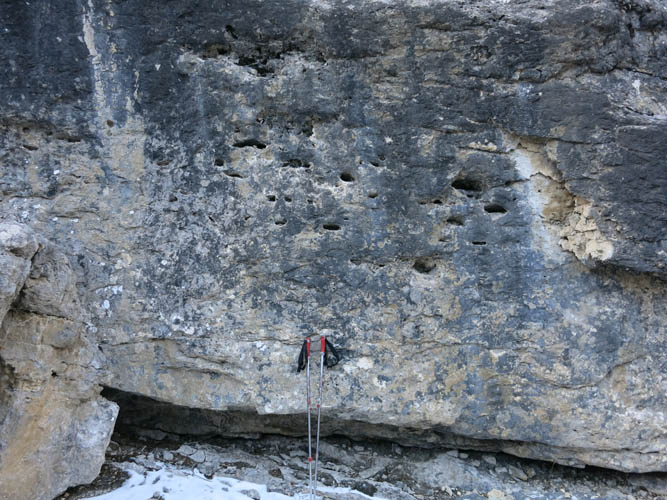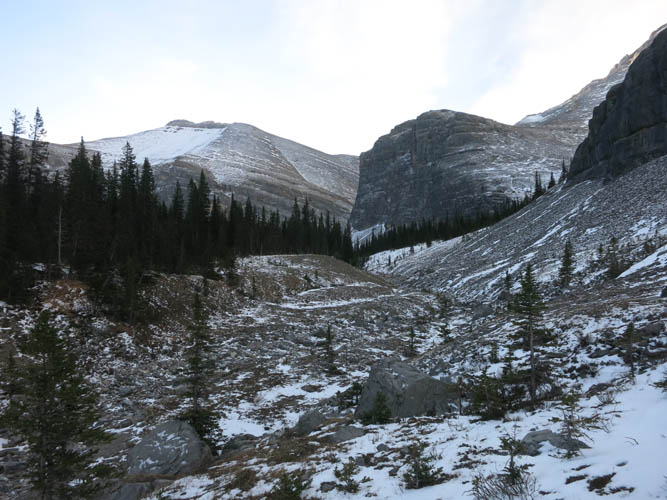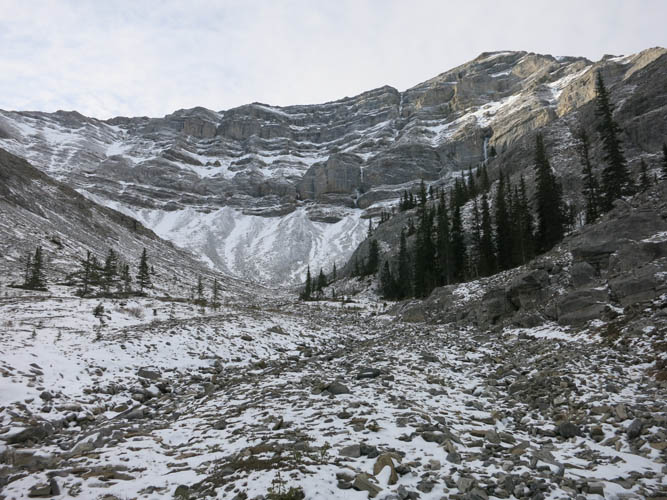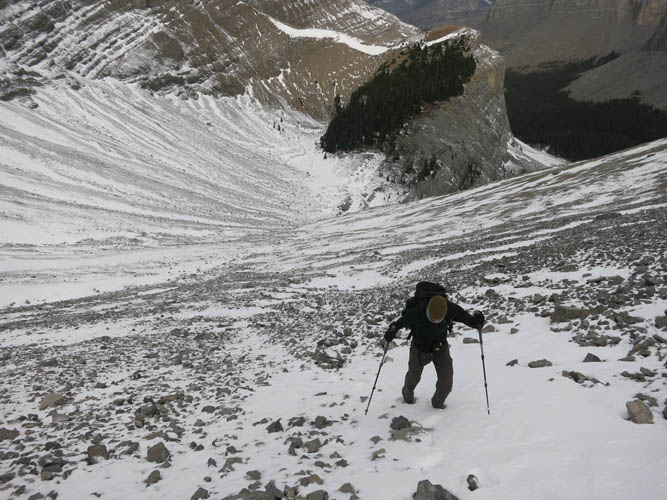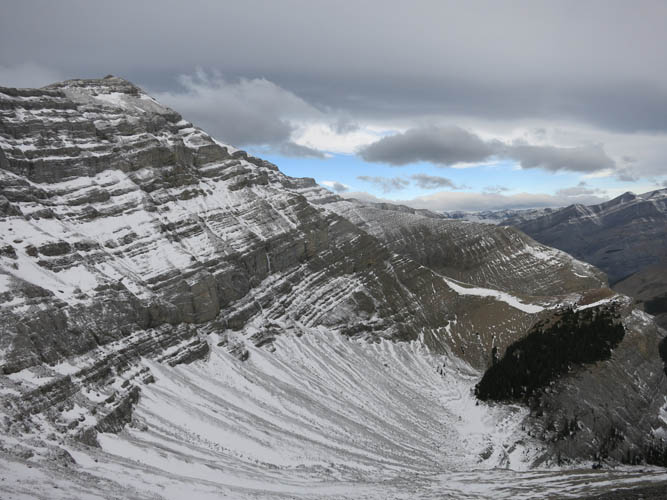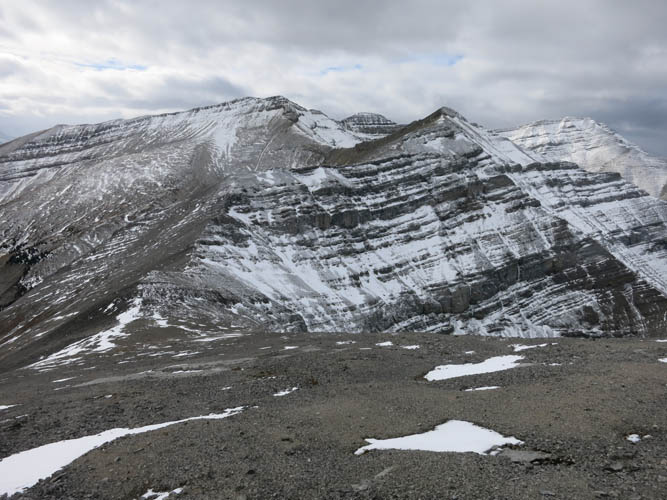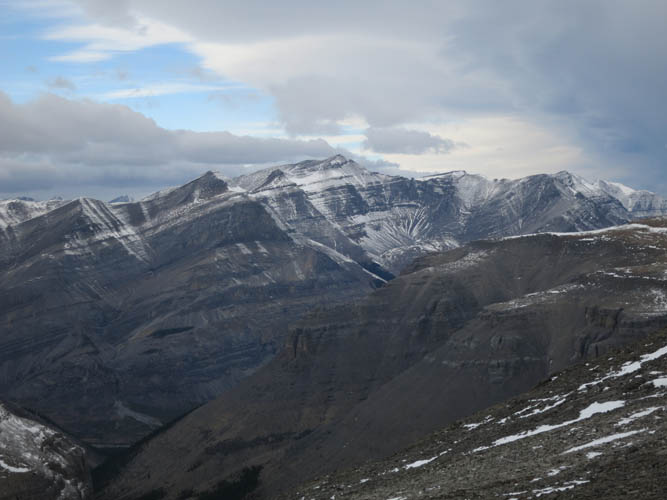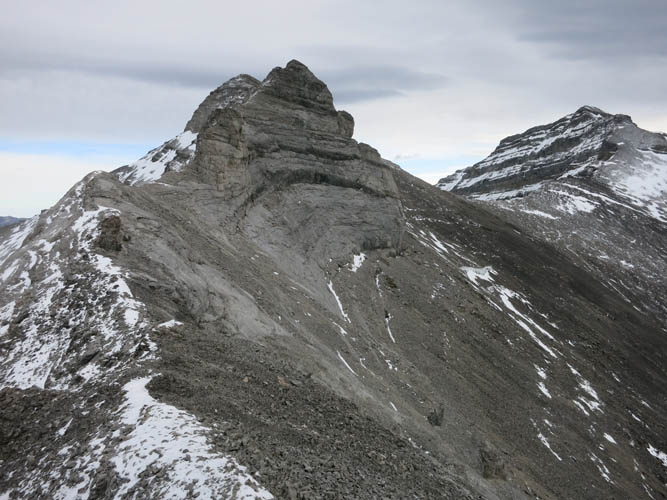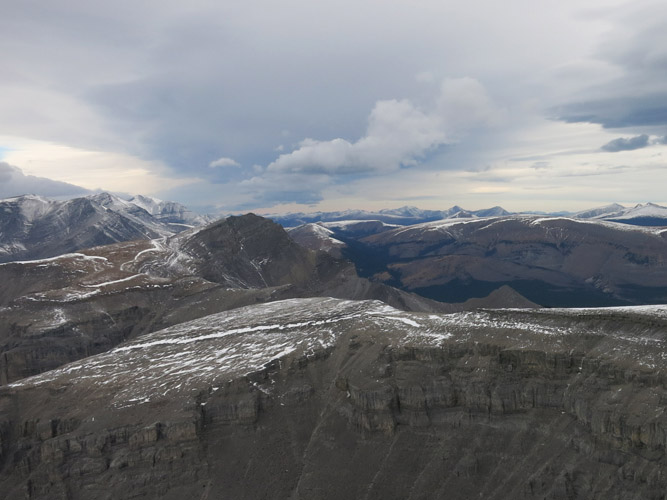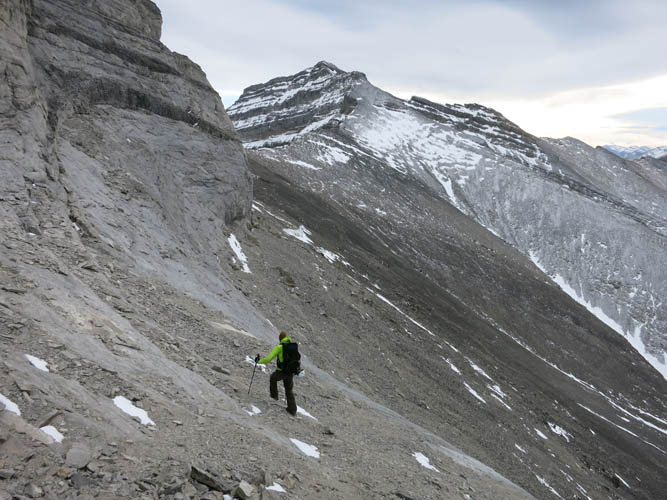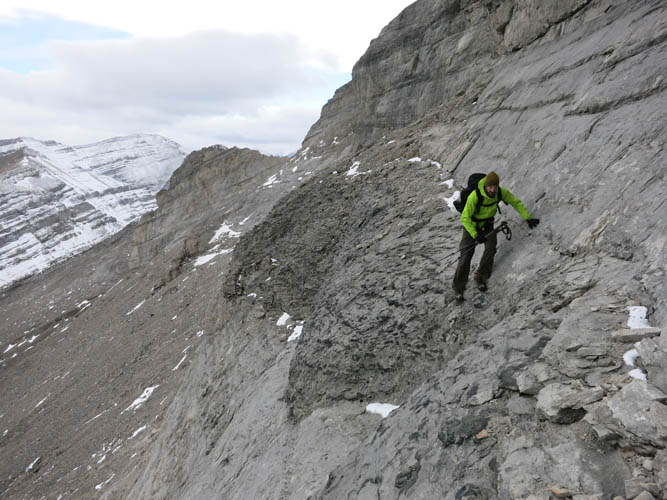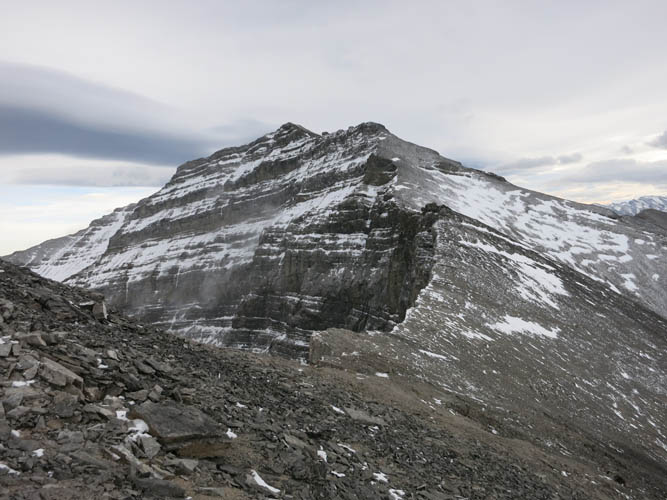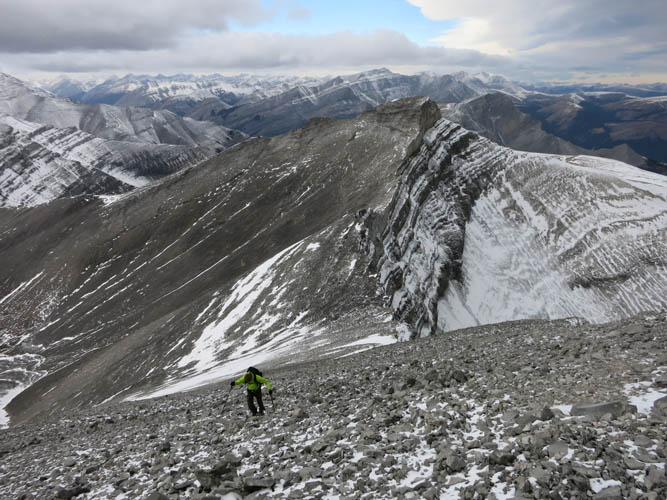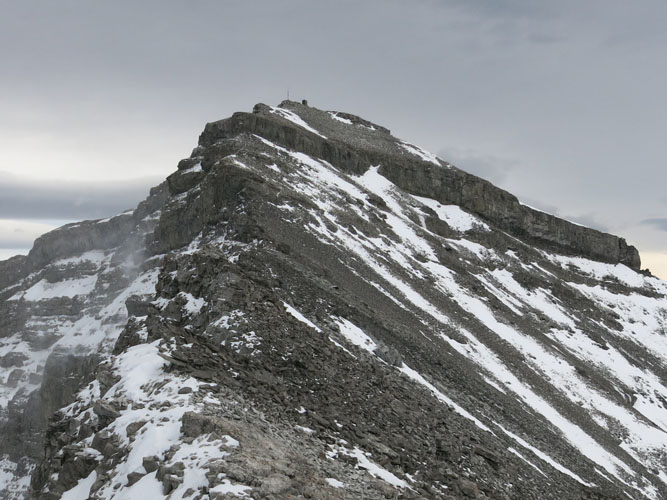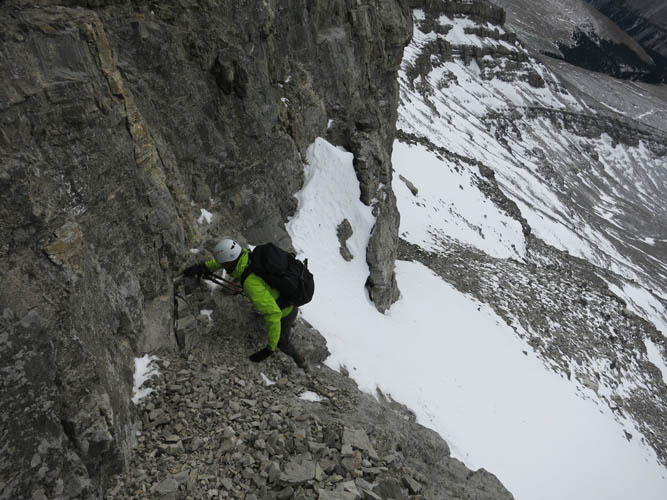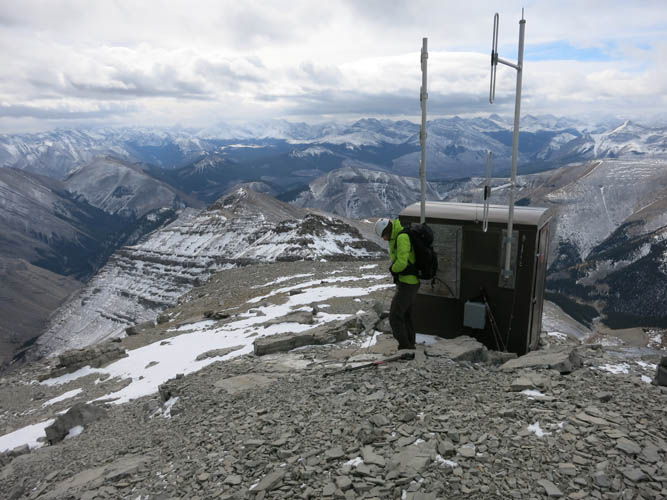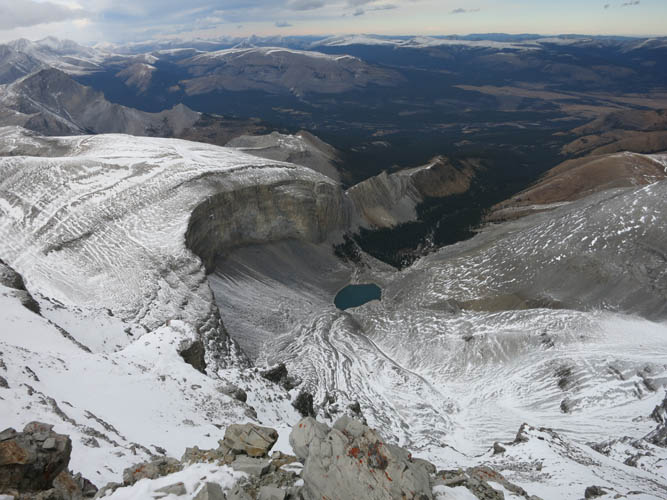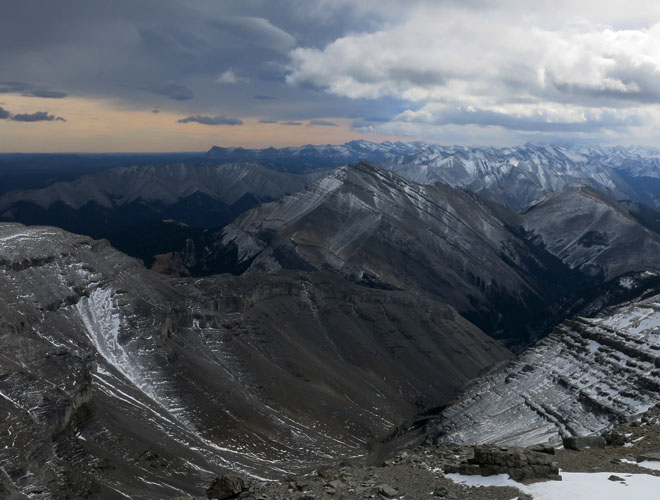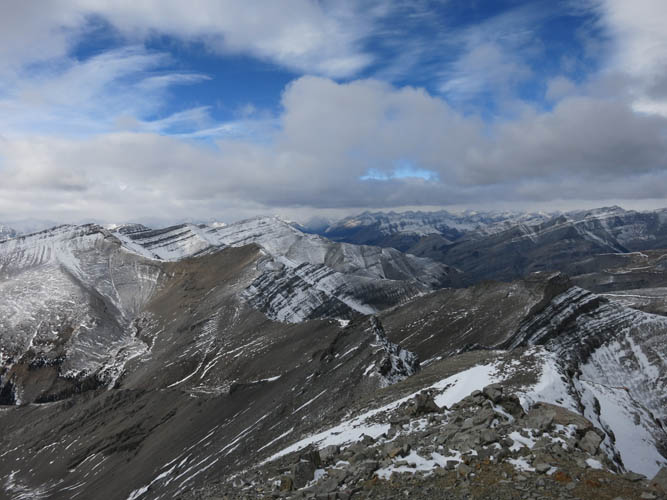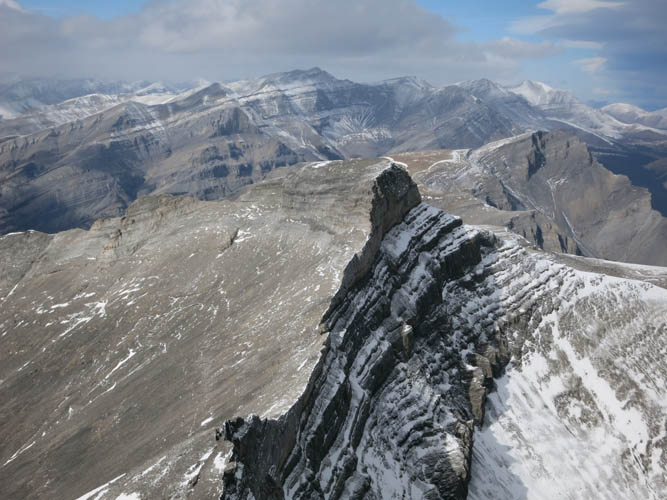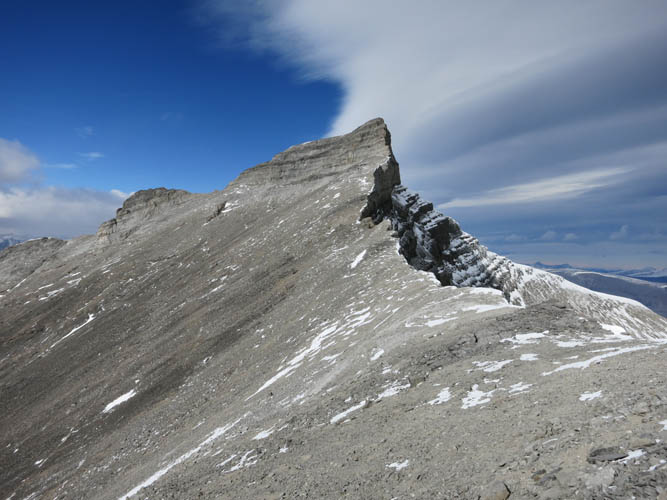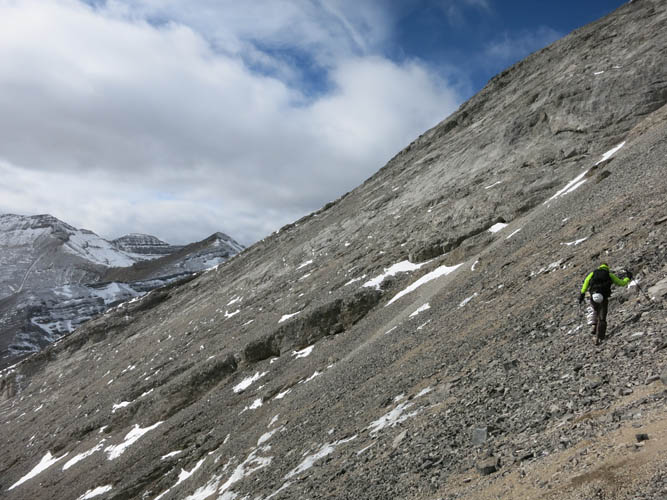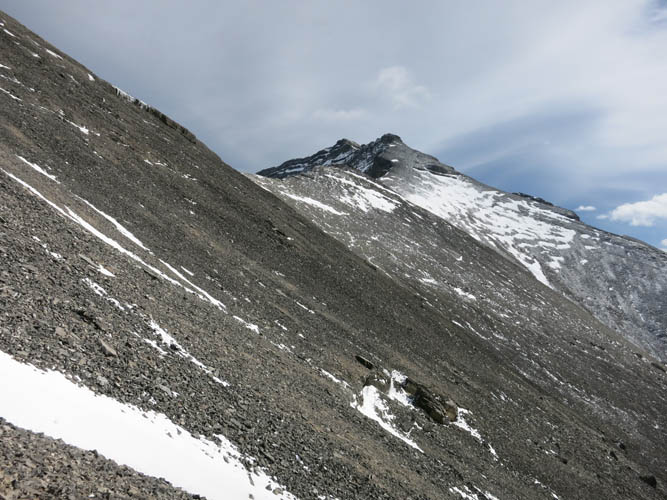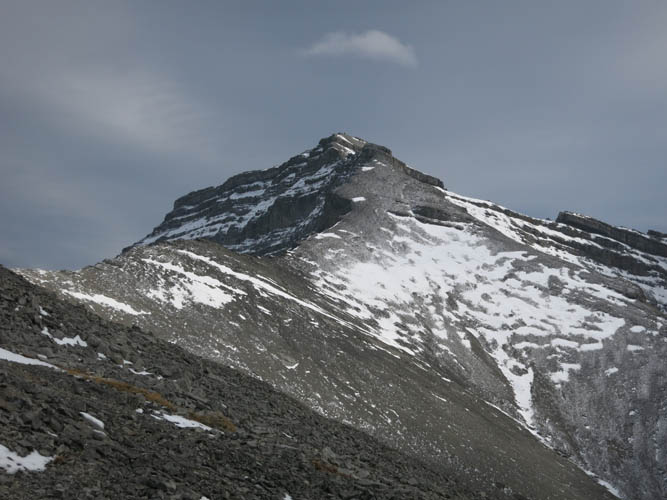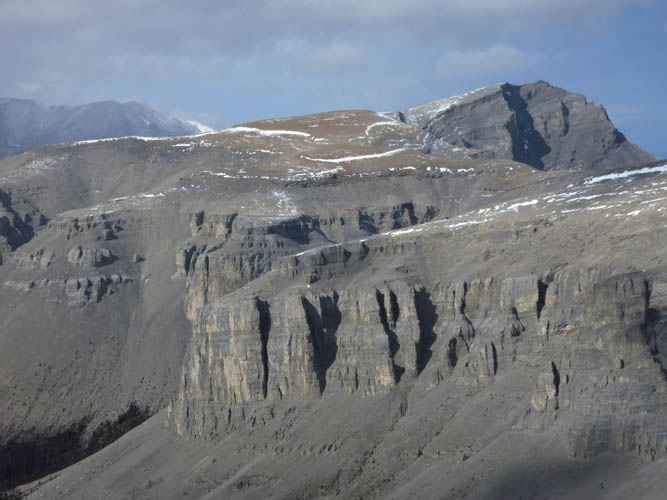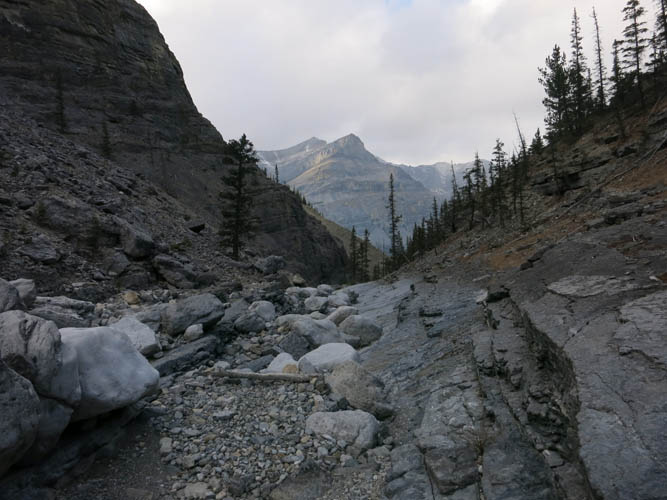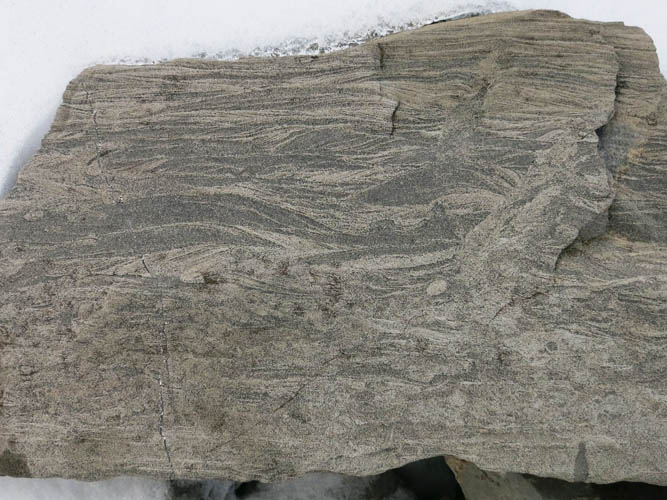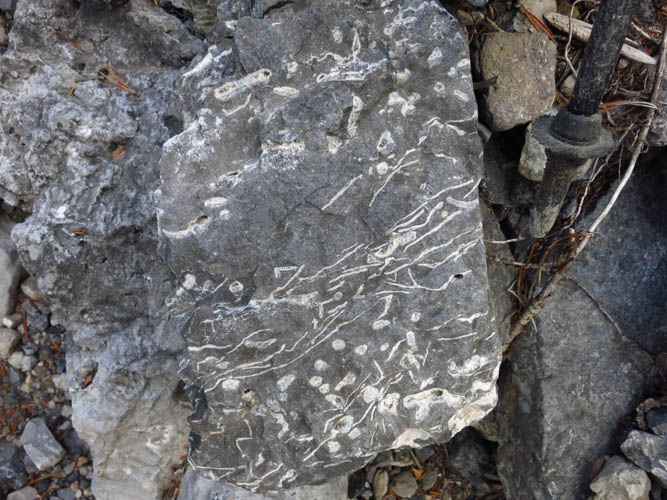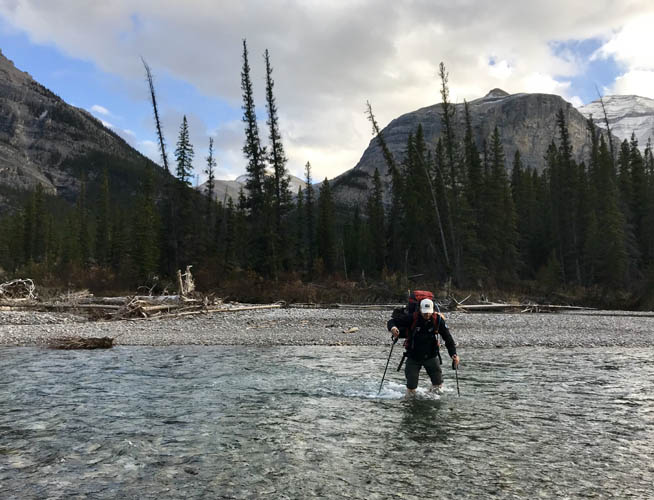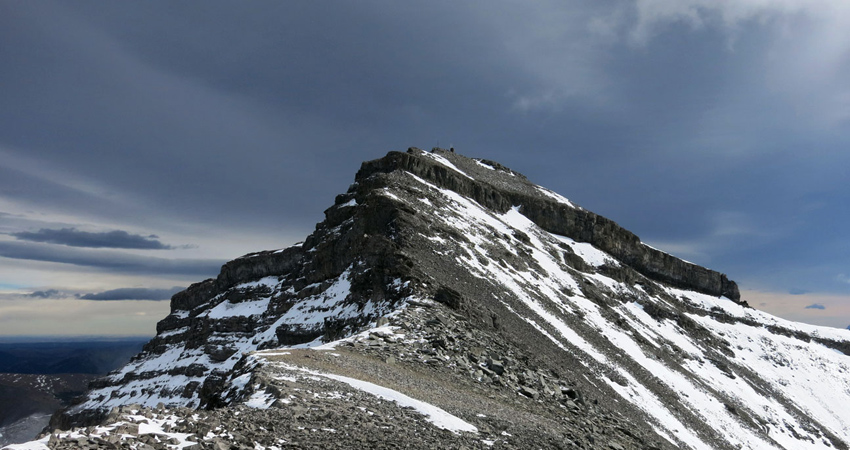9 October 2017
With Richard
We awoke well-rested after a quiet but chilly night in our little tent at camp. It had been an enjoyable outing on Gable Mountain the previous day and we were ready and eager to go exploring again. The creek had frozen over during the night so we had to use an ice axe to get water for breakfast and our morning coffee. The ice water took forever to heat up and sucked so much energy out of my stove that the small propane canister I had bought for this trip was completely empty before the water could even get to boiling point. Well, coffee and cereals still tasted great even lukewarm!
The main creek continues southeast and gradually widens, with intermittent grassy benches and forest on the sides. We loved this stretch because the hiking was easy, we made good progress, and the valley was really picturesque. I was again held up countless times by fossil beds and other interesting geological outcrops, while Richard patiently waited for me every time. We followed the creek bed all the way to the end where the valley curves around to the right and ends in a broad bowl flanked by the Barrier-Gable ridge. Snow covering the creek boulders slowed us down at times, but generally we were able to move at a decent pace here.
There are a number of ways to reach the Barrier-Gable ridge from the valley below, most of them pretty straightforward. We opted to go straight up, first over some rather tiring scree, then along sporadic rock ribs that offered better purchase. A strong easterly wind was blasting our faces when we finally reached the rounded col along the ridge, and we hurried to put on our winter jackets, hats and even mittens. It always surprises me how quickly the felt temperatures drop and how cold my hands and face can get when strong winds are at play!
At the col, we now had the summit tower of Barrier Mountain in full view for the first time. It was still a long way off, which was quite disheartening! We followed our ridge to the base of a subsidiary peak which sits along the long NW-SE ridge extending from Warden Rock to Barrier Mountain. The only problem with this sub-peak is that it’s surrounded by nasty looking steep walls on all sides, so a full ridge traverse was out of the question (linking up Warden Rock with Barrier Mountain would consequently also be more of a technical climb than a simple ridge scramble, at least from what we could see). Instead, we were forced off our ridge to the south to circumvent the sub-peak, which involved some tricky friction slabs and narrow exposed ledges. Sidesloping on scree lower down would’ve been a much easier albeit less aesthetic option, as we found out on our return.
The winds seemed to get even more ferocious once we gained the connecting ridge between the sub-peak and Barrier Mountain. There were no more technical obstacles, however, so we just put our heads down and did our best not to give in to the forces of nature that were trying to hold us back… To be quite honest, we were not enjoying this anymore – it was just too cold, the chossy scree too tiresome, and the wind gusts too exhausting to deal with. At this point, it was simply a mental challenge. We bundled up some more and just kept going, knowing very well that any breaks would cool off our core temperatures too much while we were being wobbled around.
After passing two minor bumps along the ridge, we arrived at a black rock band that appears to completely surround the summit block and perhaps gave the mountain its name – a natural barrier. A weakness to climber’s right was the obvious point to break through the band. We stomped up some snow and then enjoyed a short stint of difficult and steep scrambling to get past this hurdle. Now it was just a short plod up rubble to the summit, where no cairn was waiting for us, but a small hut complete with antenna – a repeater station similar to the one on Mount White.
It was pretty much impossible to hide from the wind up here, so our summit celebration was short-lived. The views were certainly nice, but quite frankly I’ve seen better from many other peaks in the region. One interesting aspect was Barrier’s east ridge, which appears fairly gentle from this perspective, and one wonders if it’s possible to connect from the summit to the well-defined horse trail on the low-lying ridges northeast of Barrier Mountain. This might be an easier and perhaps faster way to access the peak – only further explorations will tell.
Climbing back down the crux was not easy. The snow and verglas made things trickier than we expected, but on the other hand the snow just below the cliff might have helped to dampen the exposure and perceived consequences of a fall. As we headed back down the connecting ridge, the wind subsided and the sun finally came out to warm us up a bit. There is an exhilarating drop down the east side of this ridge, forming a massive wall that partially surrounds a small and rarely visited lake called Prisoner Point Lake. It did indeed look like a very inhospitable place down there, which is perhaps where the name came from…
Instead of slogging back up to the steep walls of the subsidiary peak and doing the sketchy traverse underneath its cliffs, we cut across scree and choss to minimize elevation losses, regaining the Gable-Barrier ridge just above the col. It certainly wasn’t fun, but quicker than our ascent route. Another option would’ve been to drop all the way down into the valley and then hike back up to the col, but this is likely not the most efficient way to go.
To avoid the steep rock ribs and rubble we had used on our way up, we descended slightly to skier’s right following a good game trail, then dropped down back into the bowl and the creek. For a change in scenery and to make it easier on our feet, we hiked much of the valley through light forest on the eastern side of the creek for as long as we could. The freezing wind gusts and unstable snow-covered slopes now seemed a distant memory as we got back to our camp, tired but at least feeling comfortably warm.
All that was left for us to do now was the long trek out, which we enjoyed just as much as on the way in. There is just so much to see and appreciate in this beautiful corner of the Rockies, it never gets boring! Compared to Gable Mountain, Barrier Mountain was definitely the longer and more challenging trip, not because of the crux but because of the mental challenge. It just takes more out of you when you have to go up and down several ridges, including all the exposed traversing and tedious sidesloping. The whole weekend was an absolutely amazing experience that I wouldn’t have had without Richard’s wonderful company; his patience, skillful route finding, and reassurance in tough moments were invaluable and much appreciated. We had a great time on both peaks, but agreed that Barrier was probably a notch more interesting due to the pleasant creek approach and variety in terrain encountered. A fantastic way to end the scrambling season!


